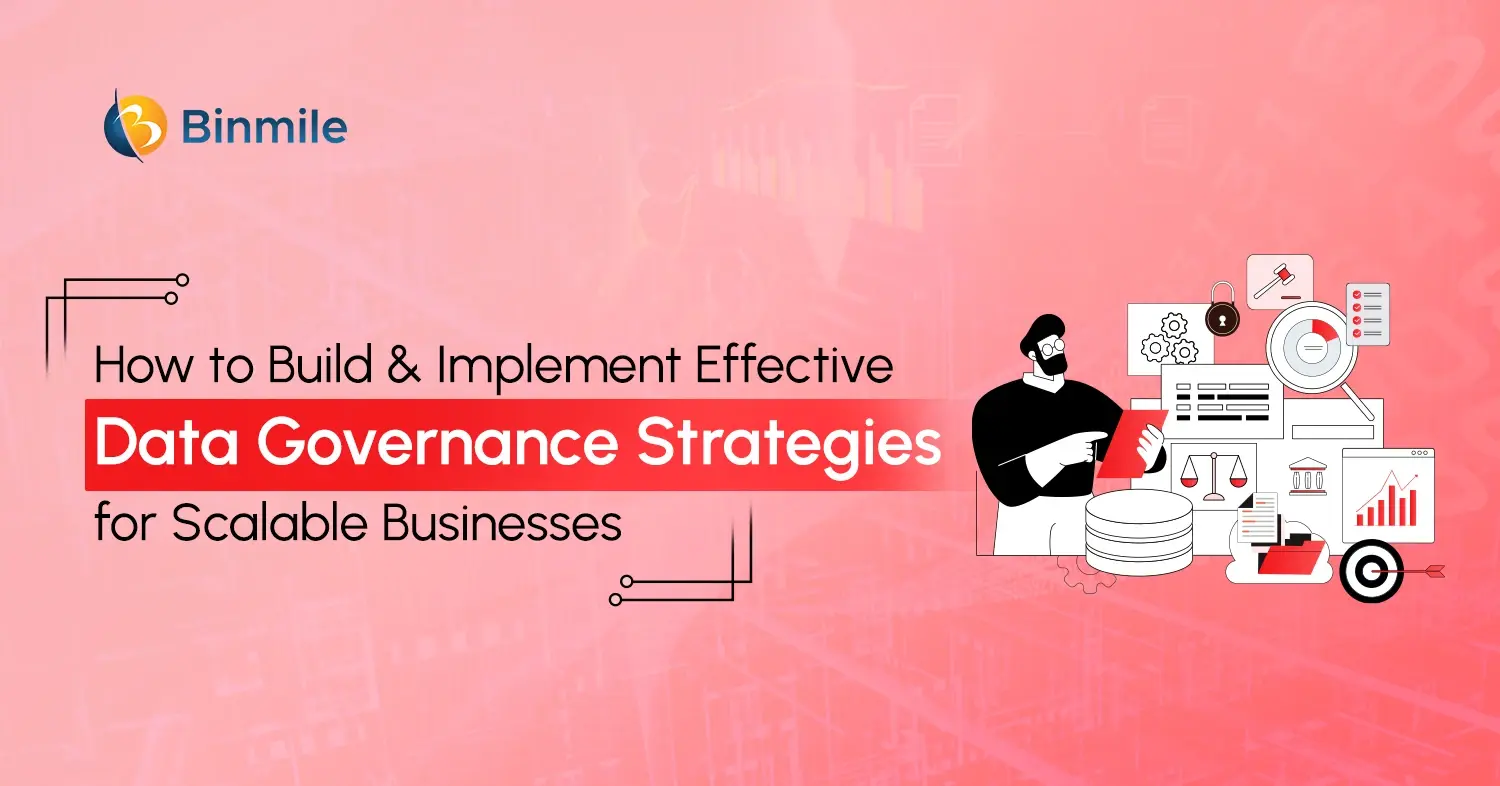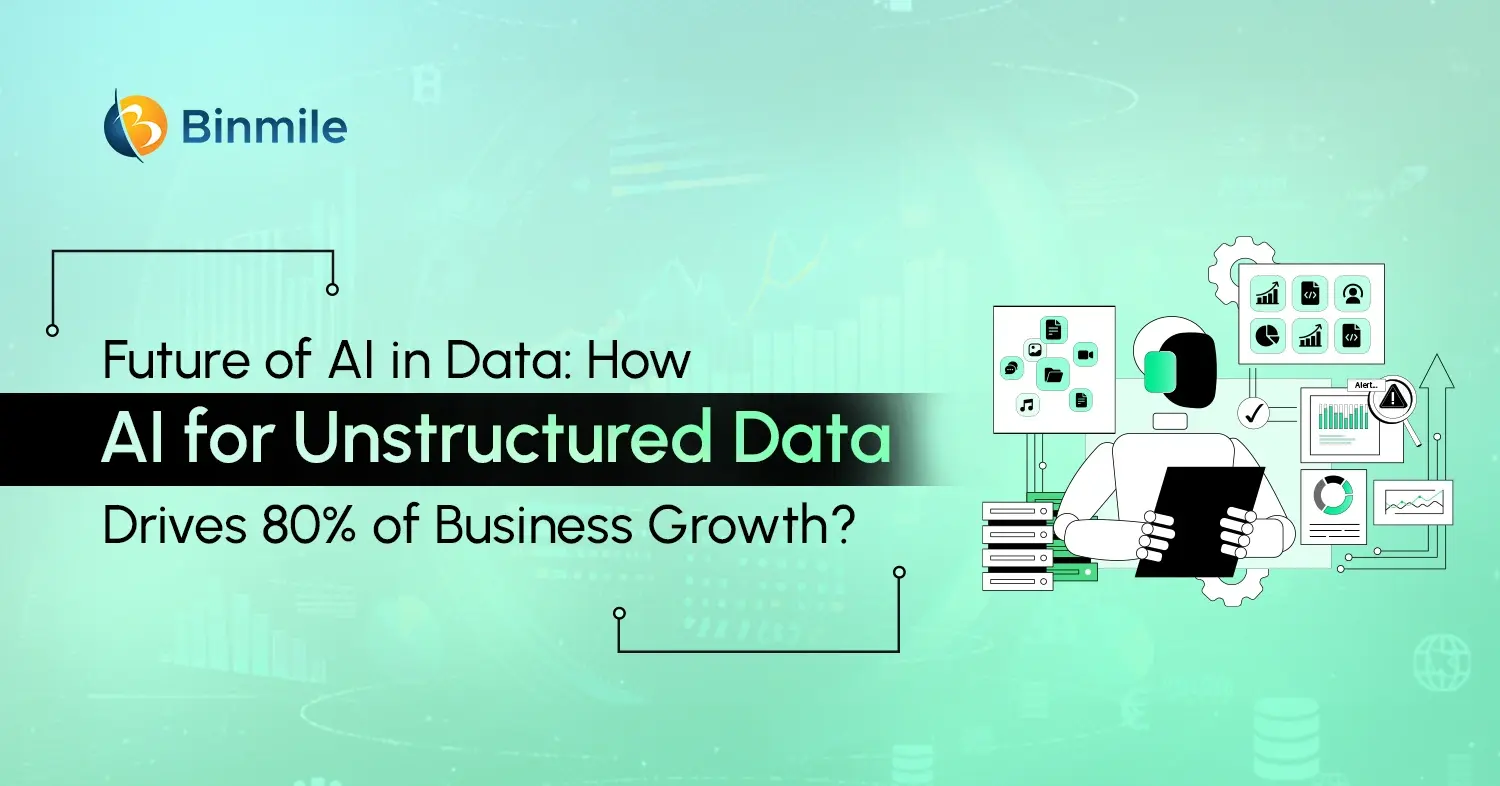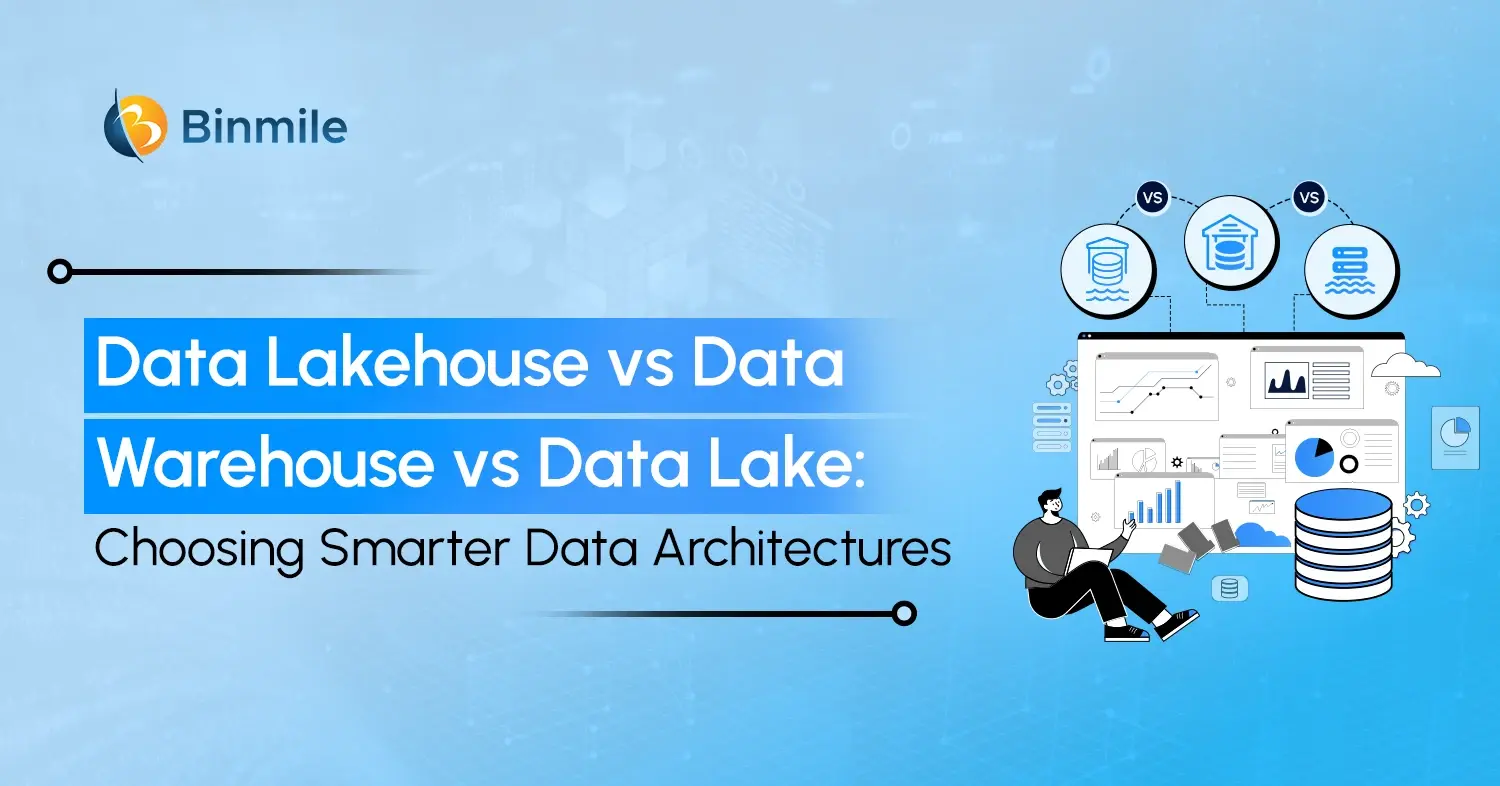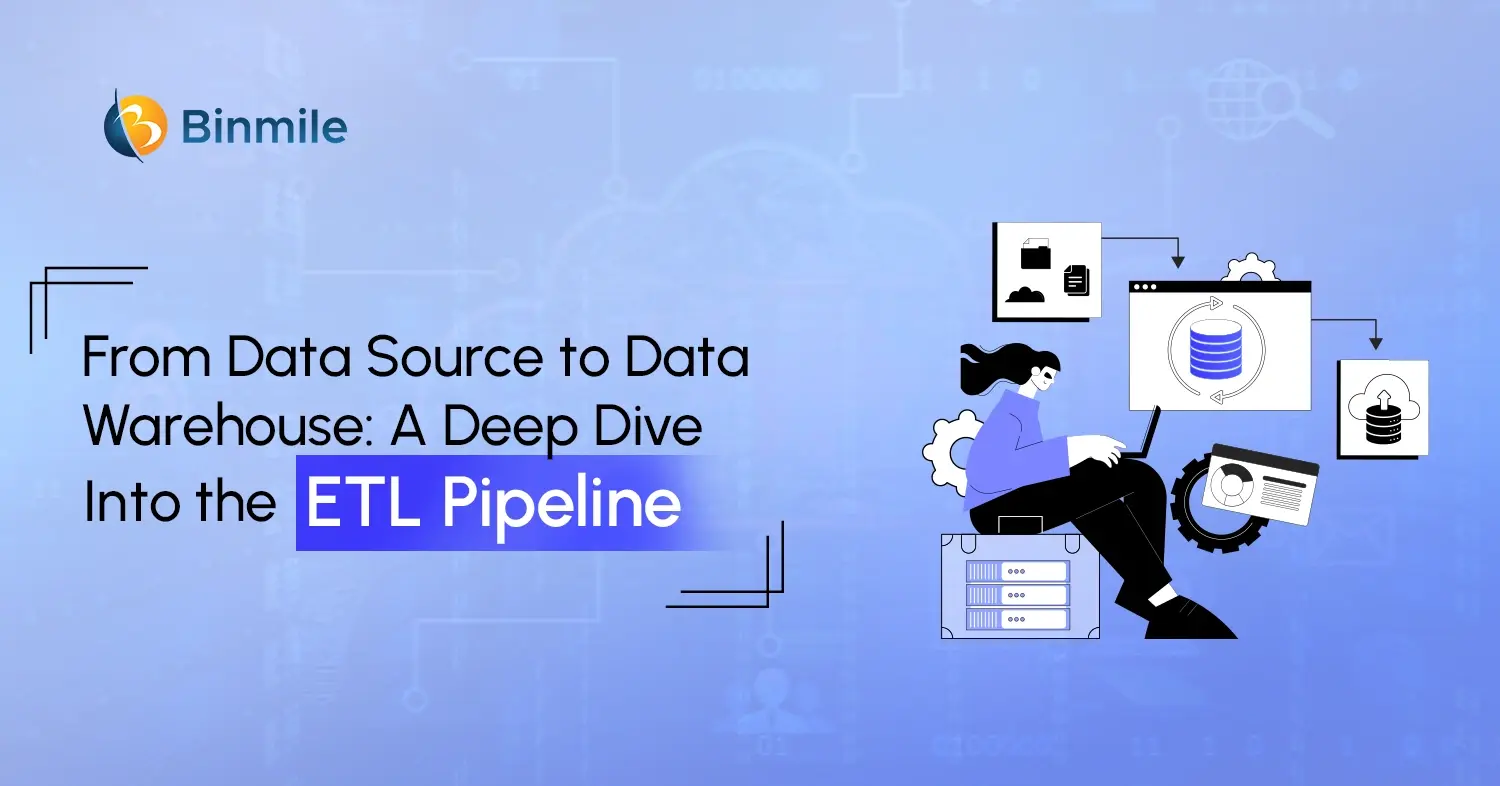In today’s data-driven world, organizations generate massive volumes of structured and unstructured data every second. But without proper data governance strategies, this data can quickly turn from an asset into a liability. Data governance strategies ensure that data is accurate, consistent, secure, and usable across the enterprise, helping businesses make smarter decisions, improve compliance, and enhance operational efficiency. According to Gartner, the GenAI applications will accelerate the time by 40% to implement D&A governance and master data management programs by the year 2027. This will help in implementing data governance effectively without much manual efforts.
This blog examines the principles of building robust data governance strategies, the key elements that contribute to their success, and how businesses can establish a sustainable data governance framework for the future.
What Is a Data Governance Strategy?
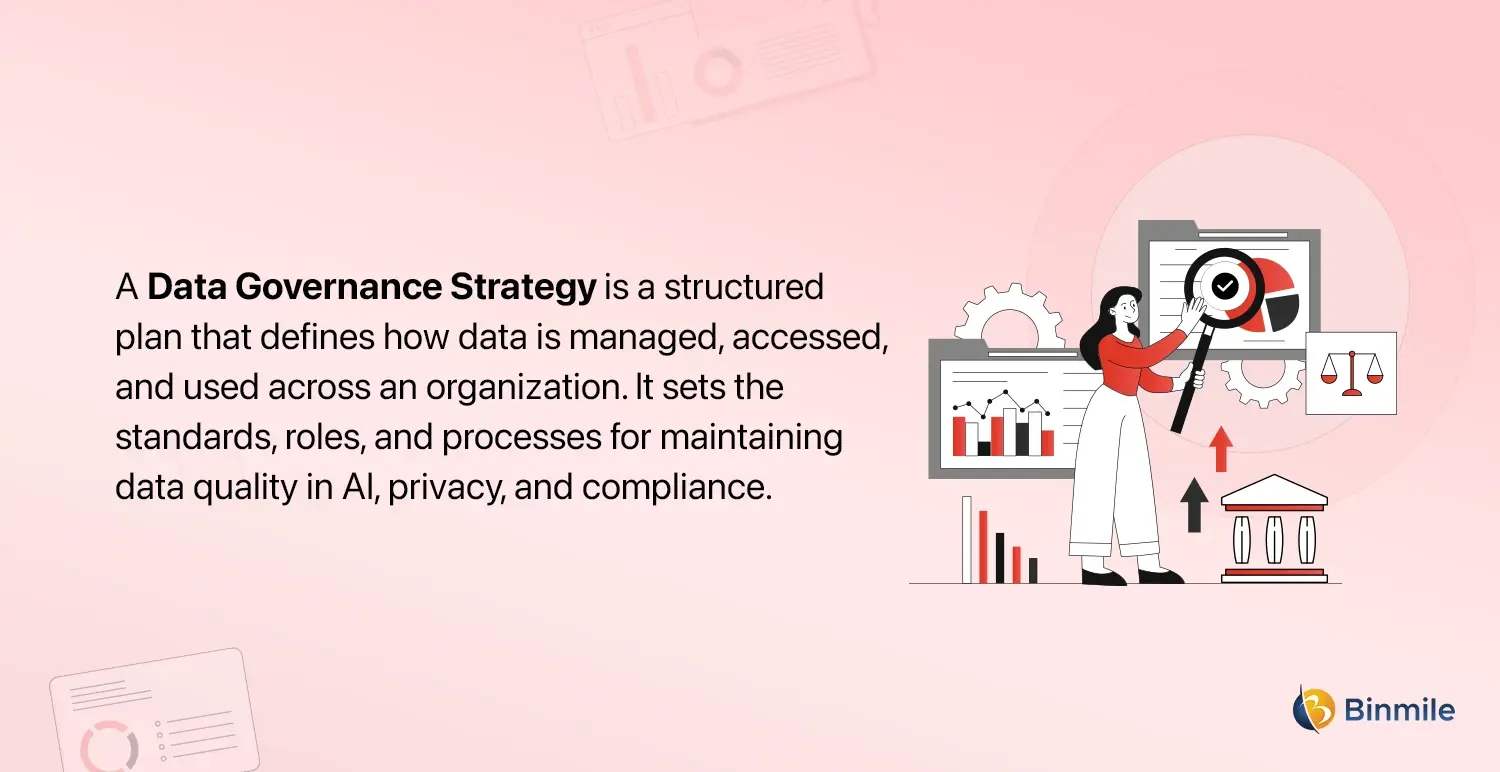
It’s not just about technology; it’s about people, processes, and policies working together to make data trustworthy. A robust data governance framework ensures that every piece of data has an owner, is easily traceable, and meets both business and regulatory requirements.
How to Implement Data Governance Strategies: Step-by-Step Framework
Building effective data governance strategies requires a systematic approach that aligns with your business goals and data maturity. Below are the key stages of data governance and data engineering best practices every enterprise should follow to understand how to implement data governance strategies:
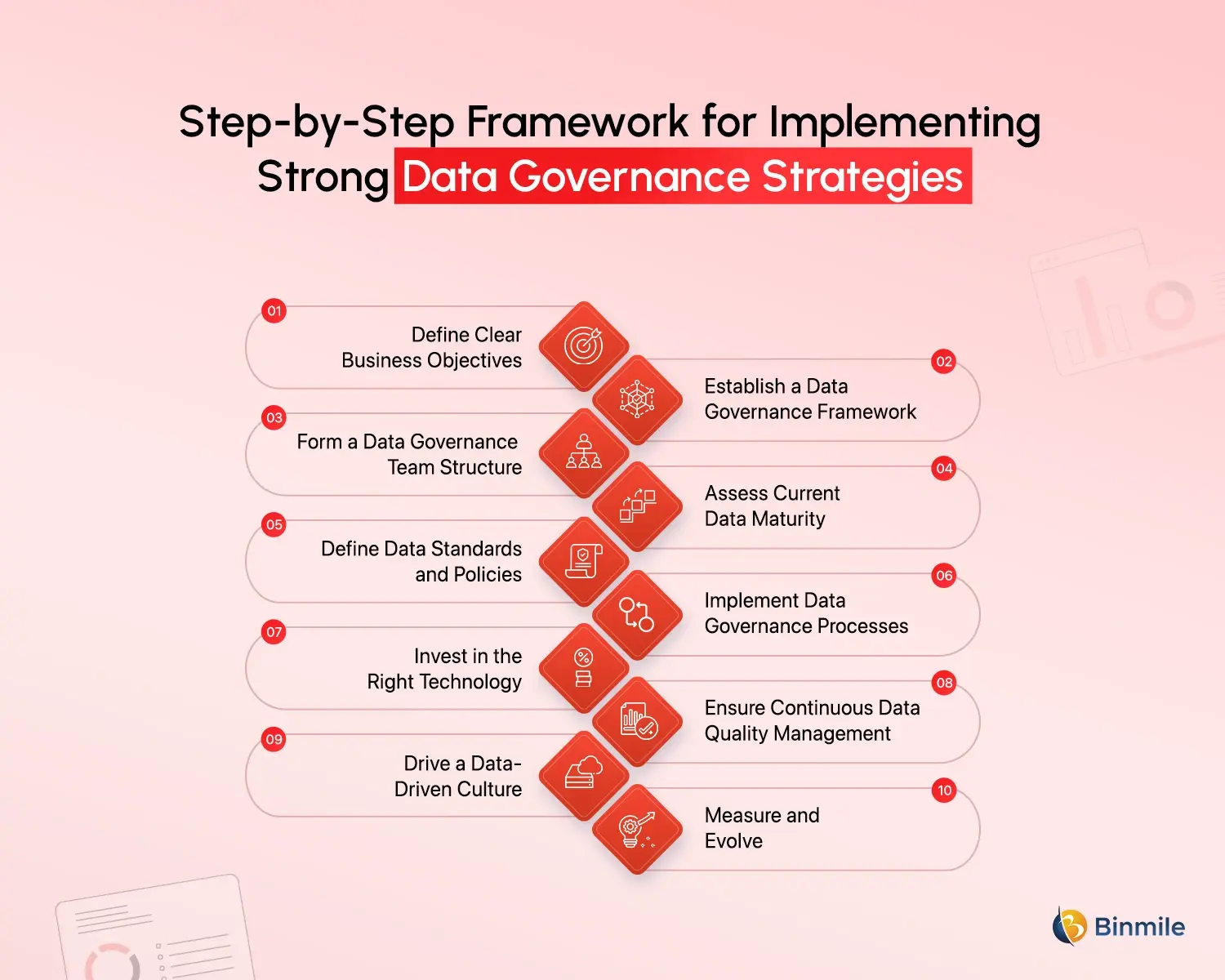
1. Define Clear Business Objectives
A powerful data governance strategy starts with identifying the purpose of the initiative. Ask yourself why this initiative is being undertaken: is it to improve data accuracy, achieve compliance, or enhance the business’s analytical capabilities? Whatever the case, the purpose should lead to clear business outcomes (such as customer experience, regulatory reporting, AI insights, etc.). Measurable goals will provide clarity to stakeholders and ensure that the initiative is focused on the business outcome.
When the purpose of governance is aligned with business objectives, data compliance is transformed into an empowering business strategy.
2. Establish a Data Governance Framework
Your organization’s activities hinge on the data governance framework. It describes how data policies will be directed, governed, audited, and enforced for your organization. Start by examining the existing data ecosystem, including data sources, systems, and flows across the organizational structure. This will help identify weaknesses like duplication, limited accessibility, and absent data ownership.
The following will help build a robust governance framework:
- Policies and Standards: Define how data collection, validation, and maintenance processes will be governed.
- Processes: Workflows will be created for data access, quality assurance, and auditing.
- Responsibilities: Clear responsibilities and accountabilities will be outlined.
- Technology Stack: Automation, consistency, and process compliance will be facilitated through governance technology.
When each component of the framework is built properly, governance will scale effectively across all systems.
3. Form a Data Governance Team Structure
Strong governance also incorporates the people. Defining data ownership is the first step in governance accountability. Data stewards, owners, and custodians are the roles that provide accountability and streamline data ownership and management across organizational functions.
Commonly, the data governance in big data roles is:
- Chief Data Officer (CDO): Responsible for overall governance and its alignment with organizational objectives.
- Data Stewards: Responsible for dataset accuracy and consistency.
- Data Owners: Responsible for compliance assurance.
- Data Architects: Design systems that reflect governance principles.
- Compliance Officers: Oversee audits and regulatory requirements.
This cross-functional structure bridges IT, compliance, and business teams, ensuring governance becomes an organization-wide effort.
4. Assess Current Data Maturity
Evaluate your organization’s data maturity. Study how the organization collects, processes, and shares data. Look for gaps such as fragmented systems, unclear ownership, or inconsistent quality standards. Understanding these issues will help you determine the order and allocation of resources effectively.
Employ maturation assessment models to gauge where you stand and target areas for improvement. A well-defined and structured approach will provide measurable outcomes and help the teams concentrate on the development of robust and scalable governance systems.
5. Define Data Standards and Policies
Standardization lays the groundwork for trustworthy data. Establish universal data definitions, classification systems, and metadata standards that will be referenced for every data-related task. Draft policies on access control, data retention, and data privacy to maintain inter-departmental uniformity and compliance.
Clearly articulated standards promote seamless collaboration, minimize data copies, and reduce misinterpretation errors. Unified standards enhance trust and allow teams to use data for problem-solving, effective decision-making, and creativity.
6. Implement Data Governance Processes
Execution is the moment where your governance strategy is realized. Define your procedures for data privacy, access management, and quality assurance. Establish concrete data quality metrics such as accuracy, completeness, and timeliness to ensure data reliability throughout its data lifecycle management.
Prioritize:
- Automation: Employ ETL testing for data governance, metadata management, and quality validation.
- Integration: Embed governance into your data pipelines and business applications.
- Monitoring: Perform consistent audits on lineage, access logs, and integrity.
Incorporating these into normal business uplift operation governance to be more proactive.
7. Invest in the Right Technology
Technology gives governance the ability to work at scale. Use technologies to automate seamless quality control, metadata management, and compliance. Data governance and metadata management technologies provide oversight by showing where data is processed and its lineage, helping to manage governance.
These technologies echo controlled ETL and analytics systems, which close the data validation and monitoring loop, thereby eliminating manual work, operational inefficiencies, and improving reliability. Ideal technology automates governance and builds systems around the governance as an ecosystem.
8. Ensure Continuous Data Quality Management
Every governance initiative is underpinned by the quality of the datasets. Regular interval data validation, cleansing, and updates contribute to completeness and correctness. Early detection of anomalies and cleansing inconsistencies should be automated.
Assess quality parameters like accuracy, consistency, and timeliness through dashboards and AI-driven validation models. Trust analytics outcomes, improve the robustness of predictive analytics, and streamline enterprise data governance strategy for better decision-making through continuous data monitoring.
9. Drive a Data-Driven Culture
Sustainable governance goes beyond frameworks and data management tools, and it’s more than a shift in mindset. It is the establishment of awareness in the organization that they actively contribute to data integrity and compliance. Data if not aligned with business will be counterproductive, and people should be made aware of that by data literacy initiatives.
When people reap the benefits of clean and compliant data, they actively contribute to its governance. Shared culture of responsibility ensures that governance is a routine task and not a one-time initiative.
10. Measure and Evolve
Data governance develops alongside your organization. Establish KPIs, including data quality, compliance adherence, and policy execution, to evaluate performance. Reflect on your governance model each quarter to assess gaps and areas for improvement.
Emerging technologies and regulations call for shifts in your governance approach. Constantly assessing your data governance strategies ensures they remain relevant and prepares for innovation without losing control.
Implement a strong data governance strategy with us and unlock accurate, compliant, and actionable insights for your business.

Common Challenges in Data Governance Implementation
While building data governance strategies brings immense value, several challenges can slow progress:
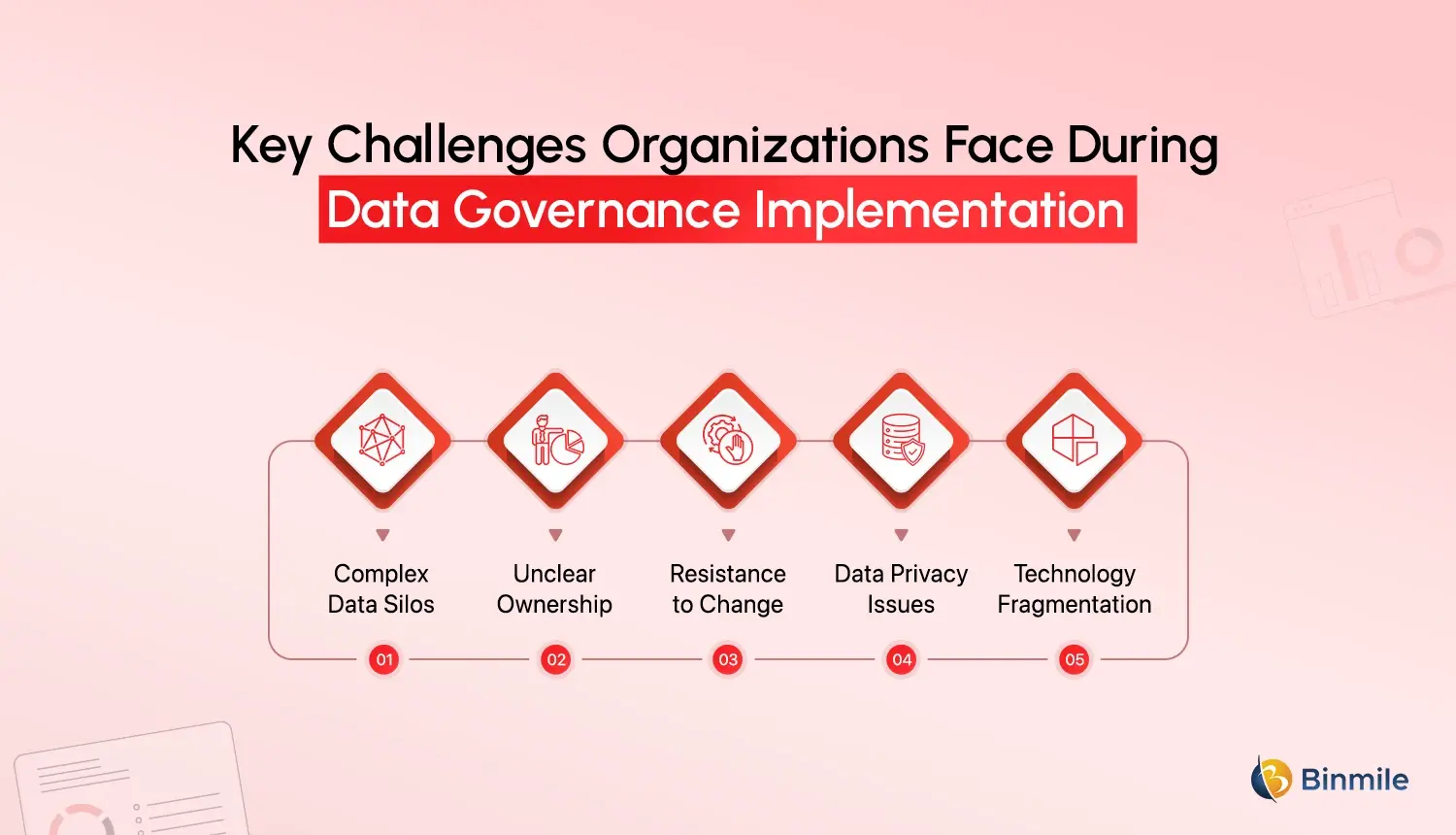
- Complex data silos: Legacy systems make integration difficult.
- Unclear ownership: Lack of accountability creates policy gaps.
- Resistance to change: Teams often see governance as bureaucracy.
- Data privacy issues: Maintaining GDPR and local compliance needs constant updates.
- Technology fragmentation: Too many disconnected tools complicate oversight.
To overcome these challenges, organizations must integrate data governance services with their data engineering services, ensuring centralized control and automated validation across the entire data ecosystem.
The Future of Data Governance: AI, Automation & Beyond
The next decade will see AI-driven data governance strategies become mainstream. Automation will manage data lineage, classify sensitive information, and recommend policies using AI. Organizations will increasingly adopt MDM implementation and data management trends to unify fragmented data sources. Real-time governance will become essential, especially for enterprises working with structured or unstructured data and hybrid cloud environments.
The integration of governance with data engineering for AI will ensure models are trained on trusted, bias-free data, strengthening ethical AI adoption globally.
Discover the advantages of Data Governance Strategies for scalable, automated, and compliant ecosystems.

Conclusion
Building effective data governance strategies is no longer optional; it’s a business necessity. With clear frameworks, defined ownership, and the right technology, enterprises can turn raw data into reliable intelligence while ensuring security and compliance. By defining clear objective and establishing a robust data governance framework, businesses can make smarter and insightful decisions. Binmile, a leading company provides data analytics services to its clients to help them design scalable, automated and compliant eco-system.
Integration of GenAI in the data governance has enhanced the data management by automating tasks, improving data quality, strengthening security and ensuring compliance through AI-driven means. If you’re looking to scale your data governance framework, our data governance services can help you effectively.
Ready to implement your own data governance framework? Get in touch with Binmile today
